Movies & TV Shows About Autism

Understanding Autism Through Media
Movies and TV shows have become powerful tools for increasing awareness and understanding of autism spectrum disorders (ASD). By portraying diverse experiences, challenges, and talents of autistic individuals, these media productions foster empathy, promote acceptance, and educate audiences worldwide. This article explores various films and series that depict autism, highlighting their significance, authenticity, and impact.
Iconic Films Based on Real Individuals with Autism
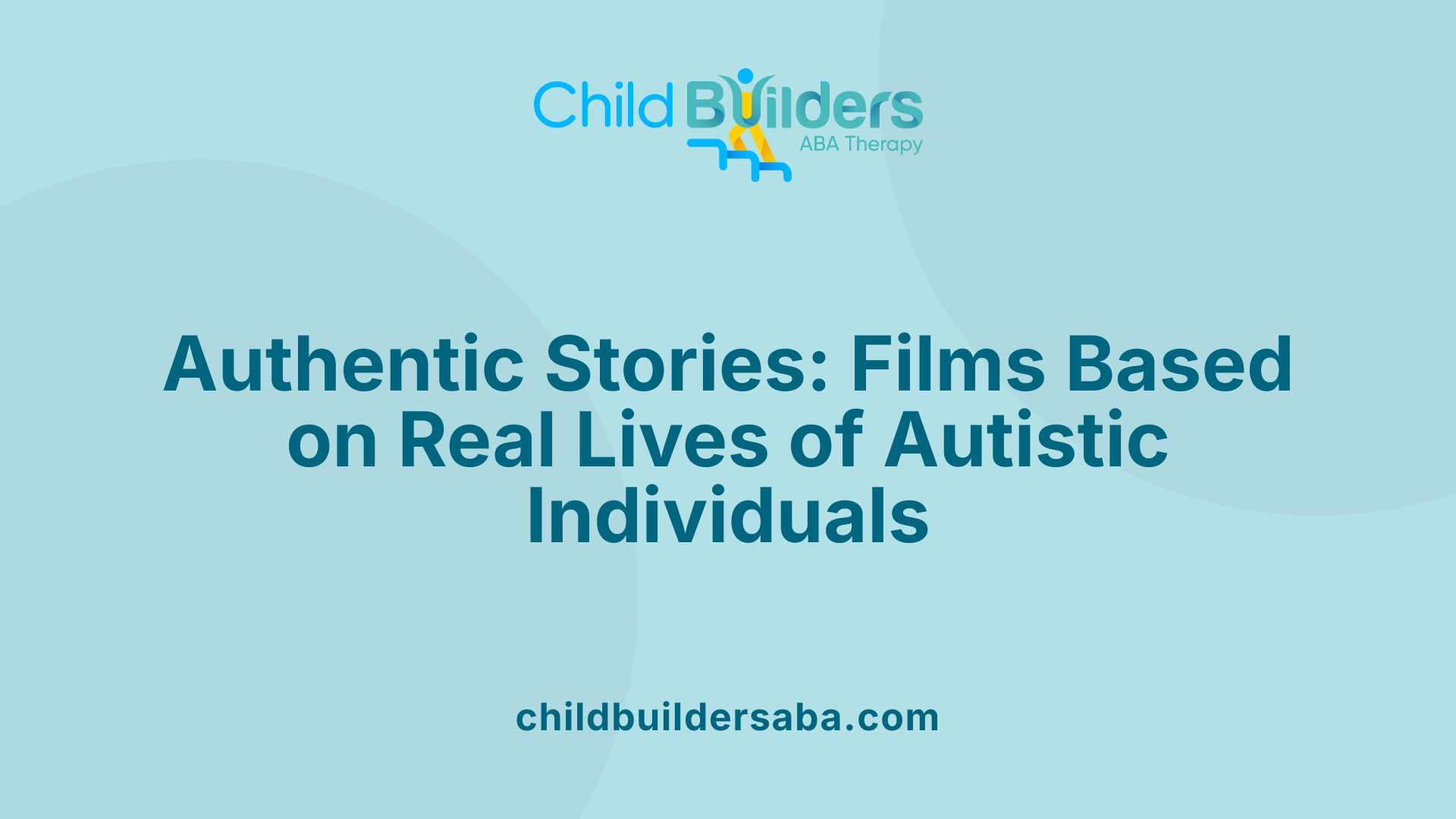
Are there any films about autism based on true stories?
Yes, several films about autism are inspired by real events and individuals. These movies not only entertain but also serve to increase awareness and understanding of autism spectrum disorder (ASD) by portraying authentic experiences.
One of the most influential films in this category is 'Rain Man' (1988). It features the story of Charlie Babbitt discovering that his estranged brother Raymond, played by Dustin Hoffman, has autism and possesses extraordinary savant skills. The film's portrayal was groundbreaking at the time, helping to bring public attention to autism and sparking widespread conversations. Although Raymond is a fictional character, the portrayal was developed with consultation from autism experts, and Hoffman's performance contributed to a more nuanced understanding of individuals with autism.
Another significant film is 'Temple Grandin' (2010), which chronicles the life of Temple Grandin herself—an autistic woman who became a renowned scientist and advocate for autism awareness. Based on her autobiographical accounts, the movie highlights her challenges and achievements, providing viewers with insight into the complexities of living with ASD. Temple Grandin's story emphasizes that autism can coincide with high intelligence and innovative thinking.
Documentaries also play a vital role in this realm. 'Life, Animated' (2016) tells the story of Owen Suskind, a young man with autism who uses Disney animated films to communicate and connect with the world. The film is centered around Owen's real-life experiences and demonstrates the importance of understanding individual strengths and interests.
Similarly, 'The Reason I Jump' (2020), based on the book by Naoki Higashida, focuses on nonverbal autistic individuals worldwide. It offers a window into the inner thoughts and emotions of people with autism and was created in close collaboration with the autistic community. Its depiction has been acclaimed for its authenticity and compassion.
Other films like 'Dina' (2017) and 'Autism: The Musical' (2007) depict real families and children with autism navigating daily life, highlighting the personal stories behind the diagnosis. 'Dina' is a documentary that follows a young woman with autism and her family, capturing their struggles and triumphs.
Many of these works are accessible through various platforms. For instance, 'Rain Man' is available on YouTube and Amazon Prime, while 'Temple Grandin' can be streamed on HBO Max. 'Life, Animated' and 'Autism: The Musical' are often found on HBO Max and Amazon, making these inspiring stories readily available.
In summary, the presence of films and documentaries based on true stories provides vital representation and understanding of autism. They shed light on both the challenges and abilities of individuals with ASD, fostering empathy and acceptance among viewers.
| Title | Type | Focus Area | Notable Features |
|---|---|---|---|
| Rain Man (1988) | Feature Film | Autism with savant skills | Realistic performance, increased awareness |
| Temple Grandin (2010) | Biopic | Autistic scientist and advocate | Based on true life, high accuracy |
| Life, Animated (2016) | Documentary | Using Disney films for communication | Focus on personal development |
| The Reason I Jump (2020) | Documentary | Nonverbal autistic perspectives | Community collaboration, authenticity |
| Dina (2017) | Documentary | Family life with autism | Deep personal insight |
| Autism: The Musical (2007) | Documentary | Creating a musical by autistic children | Showcases talents and collaboration |
Exploring these stories helps solidify awareness and acceptance of autism, highlighting the importance of real experiences in shaping public perceptions.
Educational and Awareness-Raising Media on Autism
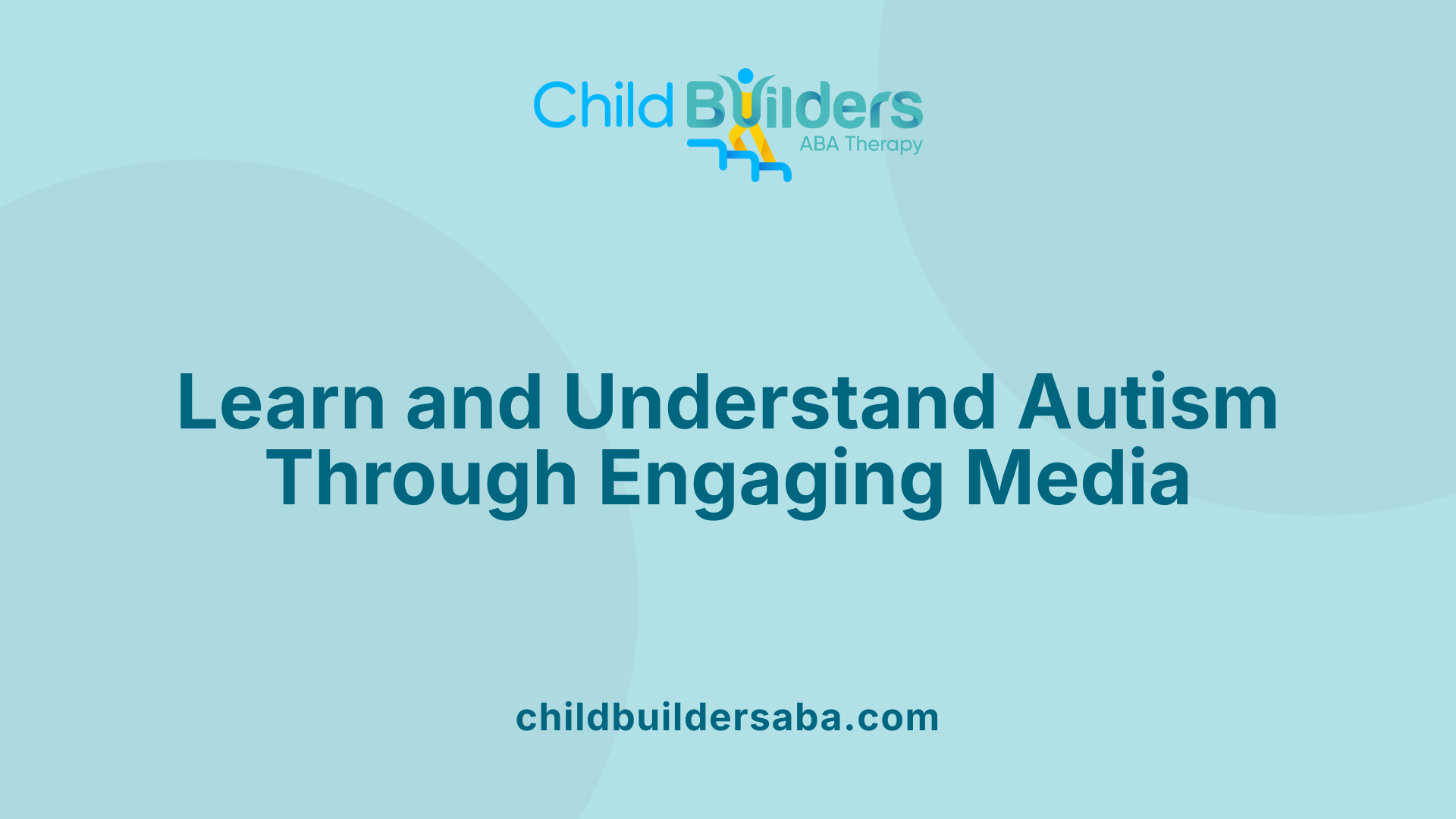
How films like 'Temple Grandin' educate audiences about autism
Movies such as 'Temple Grandin' (2010) serve as powerful tools for understanding autism. This biopic chronicles the life of Temple Grandin, an autistic woman who became a renowned scientist and advocate for autism awareness. By portraying her unique way of perceiving the world and her pioneering work in livestock handling, the film sheds light on the strengths and challenges faced by autistic individuals. It emphasizes the importance of understanding different neurological perspectives and highlights how adaptation and perseverance can lead to groundbreaking achievements.
The role of documentaries such as 'The Reason I Jump' in promoting understanding
Documentaries play a crucial role in expanding awareness about autism spectrum disorder (ASD). 'The Reason I Jump' (2020), based on a bestselling book, offers insights into the minds of nonverbal autistic people worldwide. The film uses interviews and visual storytelling to showcase their experiences, helping viewers gain empathy and a deeper understanding of their inner worlds. Similarly, 'Being Michelle' (2022) documents the journey of a deaf and autistic woman navigating the justice system, further illustrating the diverse realities within the spectrum.
Animated and family films that explain emotions and social interactions
Animated movies are accessible and engaging ways to teach children and families about emotions and social cues. Pixar’s 'Loop' (2020) features an autistic character and emphasizes themes of diversity and understanding through storytelling. Disney’s 'Float' (2020) and other short films also include autistic characters to promote acceptance. These animations help normalize neurodiversity, encouraging young viewers to embrace differences. Additionally, shows like 'Sesame Street' introduced Julia, a puppet with autism, making the topic approachable for preschool audiences.
The importance of authentic portrayals and autistic voices in media
Authentic representations are essential for fostering genuine understanding. Films and series like 'Atypical' (2017–2021), 'Love on the Spectrum', and 'As We See It' (2022) feature autistic actors or consult with autism advocates to depict characters with depth and accuracy. Such portrayals challenge stereotypes—like savant abilities being common or autism being solely a social deficit—and instead highlight individual talents and experiences.
The influence of autistic voices is increasingly recognized. Advocates like Kerry Magro emphasize the importance of including autistic self-advocates in creating content that truly represents their lives. This approach results in media that not only educates but also empowers autistic people by providing visibility and respect.
| Media Type | Notable Examples | Purpose | Impact |
|---|---|---|---|
| Films & Biopics | 'Temple Grandin', 'Music', 'Adam' | Show personal histories and achievements | Increase empathy and awareness of diverse experiences |
| Documentaries | 'The Reason I Jump', 'Autism: The Musical' | Share real-life stories and voices | Promote understanding of complexities within ASD |
| Animated Short Films | 'Loop', 'Float', 'The Peanuts Movie' | Explain social/emotional concepts | Normalize neurodiversity for young audiences |
| TV Series | 'Atypical', 'Love on the Spectrum', 'As We See It' | Present nuanced lives of autistic characters | Encourage acceptance and appreciation of differences |
Are there any educational or awareness-raising movies about autism?
Yes, there are several educational and awareness-raising movies about autism that provide insightful portrayals of autistic experiences. Films like 'Temple Grandin' (2010) offer an accurate depiction of autism through the life story of an autistic scientist, while 'Life, Animated' (2016) highlights communication via interests like Disney films. Documentaries such as 'The Reason I Jump' and 'The United States of Autism' delve into the diversity and complexities of autism spectrum disorder, promoting understanding. Animated films like 'Inside Out' (2015), 'The Peanuts Movie' (2015), and 'Finding Dory' (2016) help viewers grasp emotions and social interactions relevant to autistic individuals. Additionally, TV series like 'Atypical' (2017-2021) present nuanced representations of autistic characters, fostering awareness through relatable storytelling.
Popular and Accessible Films and Series for Viewers
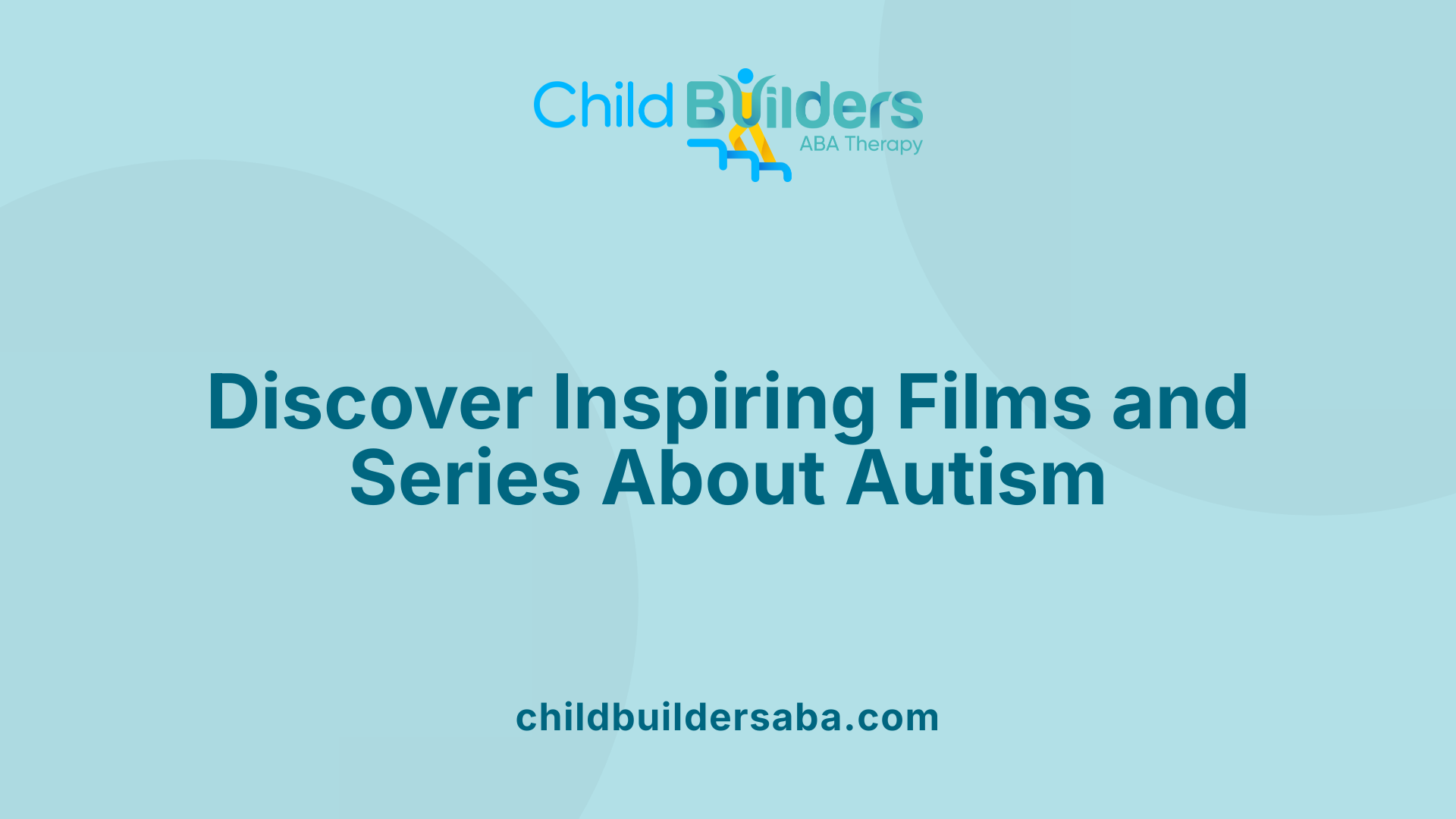
What are some popular movies and TV shows centered on autism that are accessible for viewers?
Numerous films and television series have brought autism spectrum disorders into mainstream entertainment, offering viewers both educational insights and compelling storytelling. Well-known films like "Rain Man" (1988) remain classics, depicting the story of a brother with autism and savant syndrome. Although the portrayal has stereotypical elements, it increased awareness of autism. "Temple Grandin" (2010) is a biopic about Temple Grandin, an autistic woman and influential scientist, available on HBO Max. It offers an inspiring real-life account of her achievements and challenges.
Another impactful film is "Life, Animated" (2016), which chronicles a young man’s journey to find his voice through Disney movies. This documentary is accessible on platforms like YouTube and Vudu. These stories are complemented by documentaries such as "Autism: The Musical" (2007), which depicts autistic children creating a musical, and "The Horse Boy" (2009), about a family's therapeutic journey with horses.
On the television front, Netflix’s "Atypical" (2017–2021) follows Sam Gardner, a teenager on the autism spectrum exploring independence and relationships. It provides an engaging look at life through the perspective of someone with autism. The series features both neurotypical and autistic actors, allowing for more authentic portrayals.
"The Good Doctor" (2017–present) is a popular medical drama that features Dr. Shaun Murphy, an autistic surgeon with extraordinary abilities. Available on ABC, Hulu, and YouTube TV, the show highlights both the professional skills and social challenges associated with autism.
For viewers interested in shows that focus on dating and social experiences, "Love on the Spectrum" (2019–present), especially the U.S. version, offers heartfelt insights into romantic pursuits among autistic individuals. This series emphasizes acceptance and understanding, narrated by real autistic people.
Additionally, animated characters like Julia from "Sesame Street"—introduced in 2015—serve as age-appropriate representations of autism for children. The character helps educate young audiences about diversity and inclusion.
Platforms and availability for viewers: HBO Max, Netflix, Amazon, YouTube, etc.
Many of these titles are accessible across popular streaming services. "Rain Man" is available on YouTube and Amazon Prime. Documentaries such as "Temple Grandin" can be streamed on HBO Max. "Autism: The Musical" is accessible via HBO Max or Vimeo.
Netflix offers series like "Atypical" and "Love on the Spectrum U.S." for ongoing viewing. Disney+ features shorts like "Loop" (2020), which emphasizes diversity and understanding through animated storytelling. HBO Max also hosts "Autism in Love" and "Please Stand By," focusing on personal stories.
For viewers seeking more options, platforms like Vudu, YouTube, and Apple iTunes host a variety of films and documentaries related to autism. Many of these works are available for purchase or rental, making them easily accessible for audiences worldwide.
| Platform | Titles | Content Type | Highlights |
|---|---|---|---|
| HBO Max | Temple Grandin, Autism: The Musical, Autism in Love | Documentaries, Series | Real-life stories, genuine experiences, activism, and awareness |
| Netflix | Atypical, Love on the Spectrum U.S. | TV series | Authentic characters, romantic and social exploration |
| Amazon Prime | Rain Man, The Story of Luke, Goyo | Films | Iconic portrayals, inspiring journeys |
| YouTube/Vudu | Life, Animated, Please Stand By, Autism: The Musical | Documentaries, films | Engagement with autism narratives, accessible to broad audiences |
| Disney+ | Loop | Short animated film | Promotes diversity and understanding |
These films and series foster awareness, empathy, and acceptance of autism, helping viewers understand the spectrum's diversity and challenges. With a broad network of platforms hosting these titles, audiences can easily find content suited to their interests, whether for education, entertainment, or advocacy.
Notable Characters with Autism in Media
What are some well-known characters with autism in movies or TV shows?
Many characters with autism have been portrayed in both film and television, bringing awareness and understanding to diverse experiences within the autism spectrum. One of the most iconic portrayals is Raymond Babbitt from the 1988 film 'Rain Man.' Played by Dustin Hoffman, Raymond's character is a savant with exceptional memory skills and social challenges. This film significantly contributed to public recognition of autism, though it also popularized some stereotypes about savant skills being common among autistic individuals.
In contemporary media, characters like Shaun Murphy from 'The Good Doctor' depict a surgeon with autism and savant-like abilities. The series emphasizes both the talents and social difficulties faced by autistic individuals, sparking conversations about acceptance and neurodiversity.
Similarly, Netflix's 'Atypical' features Sam Gardner, an 18-year-old navigating life and independence while on the spectrum. The show explores everyday challenges and personal growth, with some critique regarding its portrayal but praised for including an autistic actor in the role.
Other notable representations include
- Joe Hughes from 'The A Word,' which portrays a young child diagnosed with autism and his family’s experiences.
- Julia, a puppet character on 'Sesame Street,' introduced in 2015 as the first autistic character on the show, teaching children about neurodiversity.
- Sheldon Cooper from 'The Big Bang Theory,' who exhibits traits such as social awkwardness and obsessional focus, often associated with autism spectrum traits, although not officially diagnosed.
- Abed Nadir from 'Community,' who shows behaviors like echolalia, rigidity, and love for pop culture, often interpreted as having traits aligned with autism.
These characters serve as important tools in education and awareness, reflecting various aspects of autism and promoting acceptance.
More About Characters Depicting Autism
| Show/Film | Character Name | Role/Description | Representation and Notes |
|---|---|---|---|
| Rain Man (1988) | Raymond Babbitt | Autistic savant brother | Showcases savant skills, popularized autism in media, but includes stereotypes about emotion |
| The Good Doctor (2017–present) | Shaun Murphy | Autistic surgeon | Features a protagonist with autism and exceptional medical abilities, sparking awareness |
| Atypical (2017–2021) | Sam Gardner | Teen seeking independence | Focuses on social and emotional development, includes autistic actors |
| The A Word (2016–2020) | Joe Hughes | Young child diagnosed with autism | Highlights family dynamics and early childhood autism understanding |
| Sesame Street (2015–present) | Julia | Puppet character about autism | Educates children about autism in a friendly, accessible way |
| Community (2009–2015) | Abed Nadir | College student with traits of autism | Celebrated for representing social quirks and strengths, blending comedy with awareness |
Resources for Further Exploration
Search query: 'Famous autism characters in TV and film' can lead to a wide array of articles, documentaries, and educational resources that explore these portrayals further. Organizations and advocacy groups also provide insights into how media representation impacts public perception of autism.
Understanding these characters helps promote a more inclusive view of the spectrum and encourages media creators to depict autism more authentically. With ongoing advancements and debates about representation, it is vital to acknowledge both the progress and the areas for improvement in how autism characters are portrayed in entertainment.
Broad Spectrum of Autism in Media: From Stereotypes to Authenticity
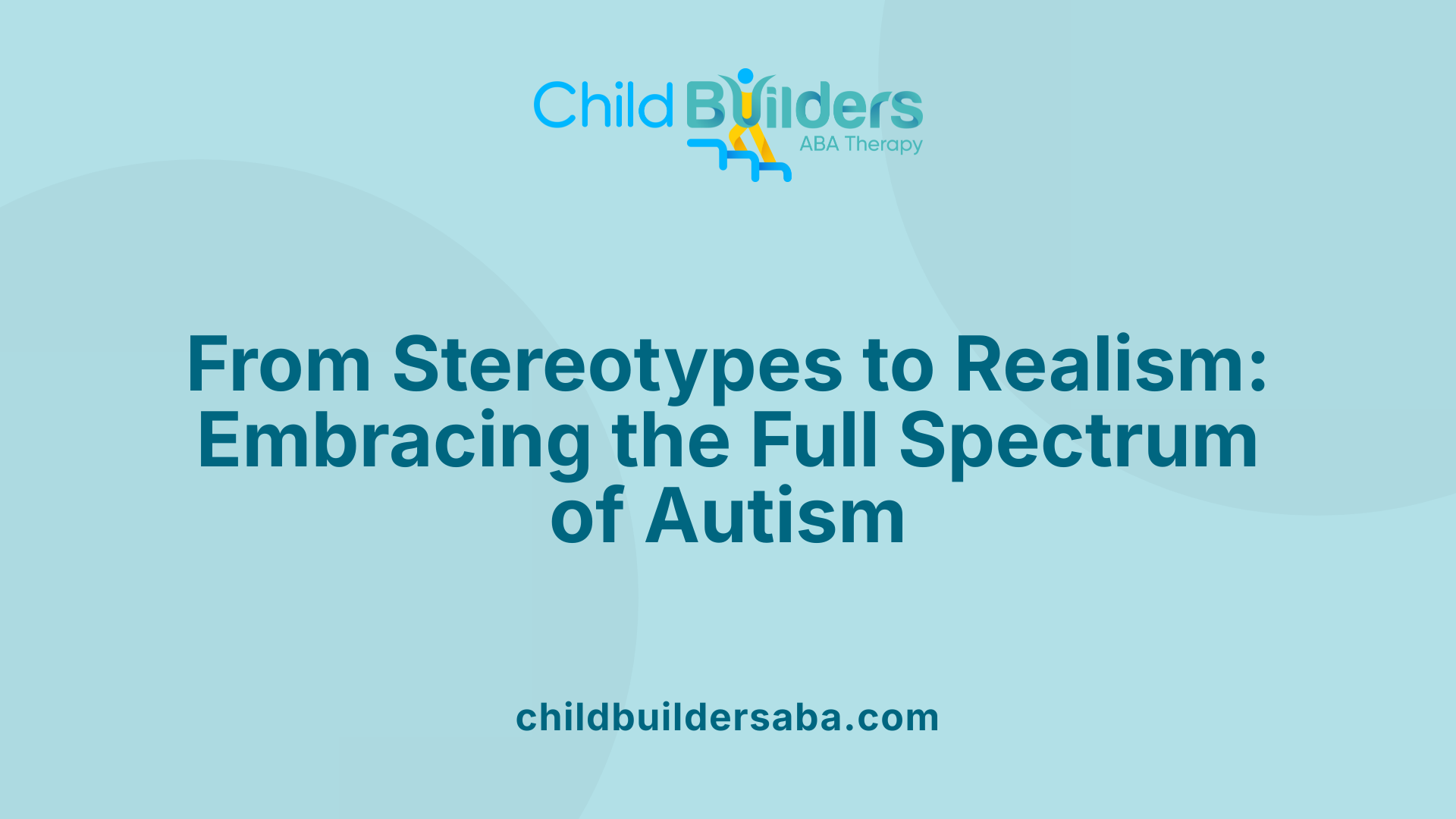
What are some well-known characters with autism in movies or TV shows?
Many films and series have portrayed individuals with autism, showcasing a spectrum of experiences and traits.
One of the most iconic characters is Raymond Babbitt from ‘Rain Man’ (1988). Played by Dustin Hoffman, Raymond was a savant with remarkable memory skills but social challenges. The film significantly increased public awareness about autism, although some stereotypes endured.
In contemporary media, characters like Shaun Murphy from ‘The Good Doctor’ exemplify autistic savants working as surgeons, often highlighting exceptional abilities alongside social struggles. Similarly, Sam Gardner from ‘Atypical’ depicts an 18-year-old seeking independence while navigating social and emotional challenges typical of many on the spectrum.
Other notable characters include Joe Hughes from ‘The A Word,’ a young boy with autism, and Julia from ‘Sesame Street,’ a puppet character introduced in 2015 as the first on the show, aimed at teaching children about autism with sensitivity.
Characters like Sheldon Cooper from ‘The Big Bang Theory’ and Abed Nadir from ‘Community’ display traits such as intense focus and social quirks that some interpret as reflecting autism, though they are not officially diagnosed. Their portrayals have sparked discussions about stereotypes versus realistic representation.
More recent shows like ‘Love on the Spectrum’ and ‘The A Word’ feature autistic actors and portray experiences driven by authentic voices, offering deeper insight into the diversity within the spectrum. These characters demonstrate abilities, differences, and personal stories that help broaden understanding.
The portrayal of individuals with autism varies greatly, from stereotypical depictions of savant talents or social awkwardness to more nuanced and accurate characterizations that reflect real lives.
Common stereotypes versus accurate portrayals
Traditional stereotypes in media often depict autistic characters as savants or socially inept individuals lacking emotional depth. While some autistic people do have exceptional skills—about 10% have savant abilities—the majority have a wide range of skills and challenges, which are not always reflected.
Some portrayals emphasize the idea that all autistic individuals are math geniuses or have extraordinary memories, which is misleading and can create unrealistic expectations.
More accurate portrayals show autistic characters with diverse talents, interests, and social capabilities. They highlight daily realities, struggles, and strengths, such as maintaining relationships, pursuing careers, and expressing emotions.
The portrayal of savant syndrome and its realities
Savant syndrome, featured in movies like ‘Rain Man,’ is rare, appearing in about 1 in 10 individuals with autism. It involves extraordinary skills in specific areas like memory, art, music, or calculation.
Media often dramatizes these talents, sometimes at the expense of portraying the typical day-to-day experiences of autistic individuals.
Efforts are ongoing to present savant skills as part of a broader, more realistic picture of autism, emphasizing that most autistic people do not possess or are defined by extraordinary talents.
The importance of autistic actors and authentic voices
Authentic representation is vital for accuracy and for empowering the autism community. Including autistic actors in film and TV helps ensure portrayals resonate genuinely with lived experiences.
Shows like ‘Love on the Spectrum’ and ‘The A Word’ involve autistic actors who bring authentic perspectives. This approach reduces stereotypes and fosters understanding and acceptance.
Organizations like the Autistic Self-Advocacy Network (ASAN) promote the inclusion of autistic voices in media production.
Criticisms of media representations and efforts for improvement
Many portrayals have faced criticism for perpetuating stereotypes, such as depicting autistic characters as inspiration just for their differences or emphasizing their social struggles without nuance.
Some films, like ‘Music,’ faced backlash for casting neurotypical actors to play autistic characters, which many consider ableist.
However, recent efforts focus on more nuanced, respectful depictions, involving autistic consultants and actors. Productions aim to showcase the full spectrum of autism, including both challenges and strengths.
In summary, while media still has room for improvement, increasing representation by autistic creators and performers promotes richer, more accurate portrayals that foster understanding and acceptance of neurodiversity.
| Aspect | Traditional Stereotypes | Current Trends | Examples |
|---|---|---|---|
| Talent | All autistic are savants | Diverse skills and talents | ‘Rain Man,’ ‘Life, Animated’ |
| Social Skills | Socially incapable | Vary widely; some socially adept | ‘Atypical,’ ‘Love on the Spectrum’ |
| Emotional Expression | Lacking emotion | Expressing a full range of emotions | ‘Autism: The Musical’ |
| Authentic Voices | Rarely involved | Increased involvement of autistic actors and consultants | ‘The A Word,’ ‘Loop’ |
This evolving portrayal aims to present autism as a broad, complex spectrum rather than a set of stereotypes, fostering greater understanding and acceptance.
Advocacy, Authenticity, and the Future of Autism Representation
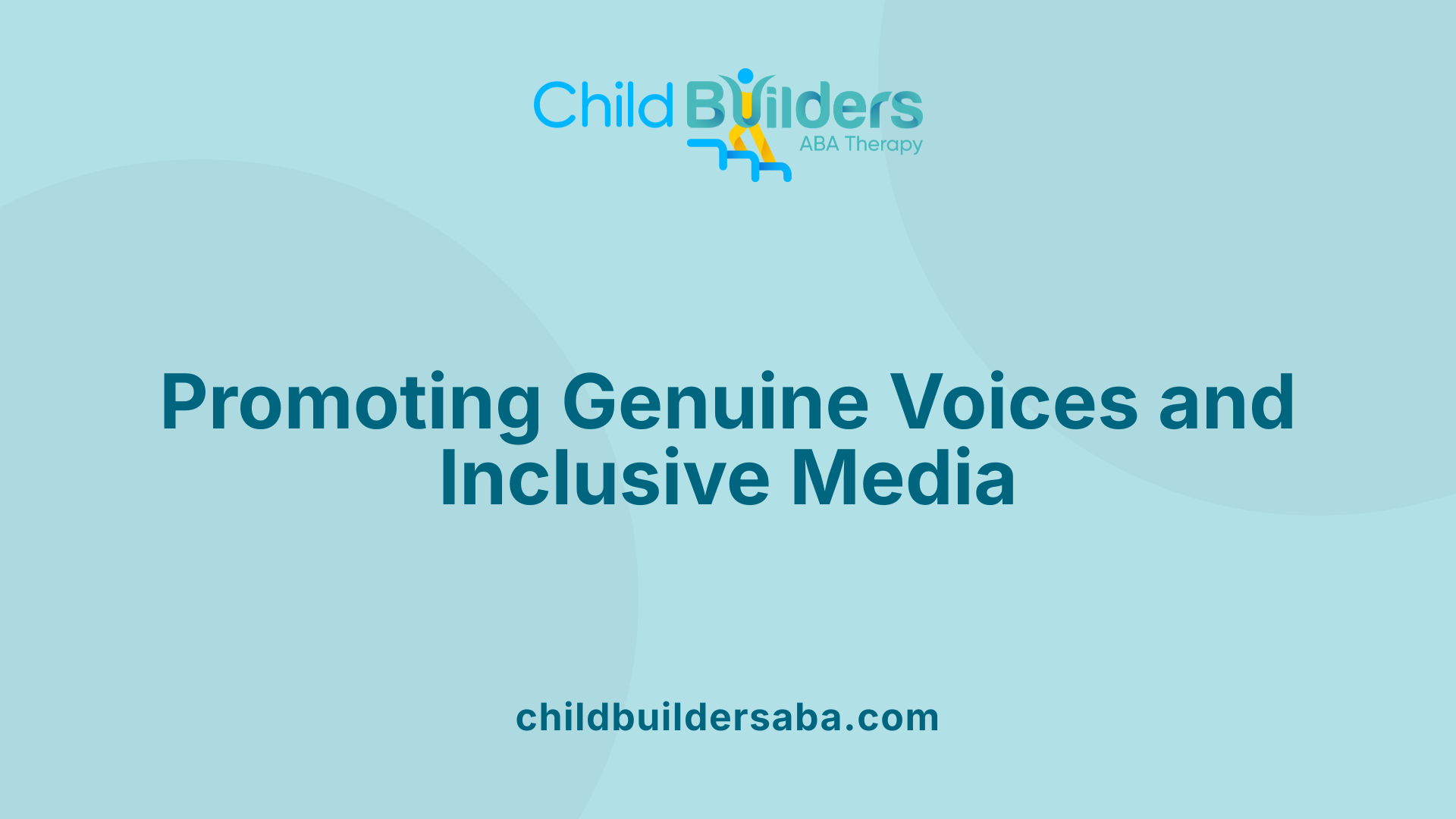
What role do autism advocates and consultants play in media portrayals?
Autism advocates and consultants play a crucial part in creating accurate and respectful media representations of autism. Experts like Kerry Magro, an autism advocate and consultant, often provide guidance to filmmakers and writers to ensure depictions are realistic and nuanced. They help move away from stereotypes and promote authentic portrayals by advising on behavior, communication styles, and sensory experiences.
Consultants and autistic individuals themselves bring invaluable perspectives, ensuring that stories reflect the diversity and complexity of real lives. These collaborations lead to media that not only entertain but also educate audiences and foster understanding.
Can you give examples of progress, such as autistic actors and nuanced portrayals?
Progress in autism representation can be seen in the increasing presence of autistic actors in film and television. Shows like As We See It (2022) feature lead actors with autism portraying characters on the spectrum, creating more authentic narratives. Similarly, Love on the Spectrum (2019) and Heartbreak High (2022) include autistic characters played by actors with autism, adding credibility and depth.
Nuanced portrayals are also emerging in series like Atypical, which follows a young adult on the spectrum seeking independence, and The A Word, focusing on a family with an autistic child. These stories, while sometimes imperfect, strive to present autism with more empathy and complexity, moving beyond stereotypes to show a broader spectrum of experiences.
Why is listening to autistic voices and experiences important?
Centering autistic voices is vital for authentic representation. Autistic individuals often share their own stories through documentaries like Being Michelle (2022), which explores navigating the justice system, and Autism: The Musical (2007), showcasing autistic performers creating art. Such firsthand accounts help dispel misconceptions and humanize the condition.
Listening to their perspectives ensures that media reflects true diversity within the autism community and respects the dignity of those it portrays. It fosters a culture of acceptance and understanding, which can influence policy, education, and social attitudes.
How can media further improve and diversify autism portrayals?
To continue advancing autism representation, media should include a wider range of stories and characters. This involves depicting autistic individuals with varying abilities, backgrounds, and experiences—covering nonverbal autistics, those with co-occurring conditions, and individuals of different ages and cultures.
Increased participation of autistic creators, writers, and actors is essential. Funding and supporting projects that highlight authentic voices and experiences are steps toward this goal. Additionally, ongoing education for content creators about autism can reduce stereotypes and promote respectful storytelling.
As the landscape of media evolves, future projects should prioritize diversity, authenticity, and the inclusion of autistic voices, ultimately fostering greater understanding and acceptance.
Are there any films about autism based on true stories?
Yes, several films about autism are rooted in real-life stories. Notable examples include Rain Man (1988), which features a character with autism and involved expert consultation, and Temple Grandin (2010), a biopic about the autism advocate and scientist Temple Grandin. Documentaries such as Life, Animated (2016), Dina (2017), and Autism: The Musical (2007) focus on actual individuals and their journeys.
Other films like Miracle Run (2004) and The Horse Boy (2009) depict true stories of families navigating autism. These works deepen understanding by portraying genuine experiences, often inspired by real events or people, facilitating awareness and empathy among viewers.
| Focus Area | Examples | Additional Notes |
|---|---|---|
| Biographical films | Temple Grandin, Rain Man | Based on real lives and events |
| Documentaries | Life, Animated, Autism: The Musical | Focused on real individuals and families |
| Family stories | The Horse Boy, Goyo | True stories of navigating autism |
| Representation impact | Increased awareness and advocacy | Films serve as powerful educational tools |
This ongoing effort to depict autism authentically helps reduce stigma and fosters a more inclusive society. Films and shows that embrace genuine stories and autistic voices set a precedent for respectful and diverse portrayals in the future.
Moving Toward Greater Understanding and Representation
As the landscape of film and television continues to evolve, so does the representation of autism. Authentic portrayals, increased involvement of autistic actors, and stories grounded in real experiences foster greater understanding and acceptance. While progress has been made, ongoing efforts from advocates, creators, and audiences are essential to ensure diverse, respectful, and accurate representations of autism in media. These narratives not only educate but also empower autistic individuals and their families, paving the way for an inclusive media landscape.
References
- Best Movies Involving Autism Spectrum Disorders - IMDb
- Autism in Movies and TV Shows: What to Know Before Watching
- 3 shows and movies about autism | Autism Speaks
- Movies, Documentaries & Shows About Autism - Bancroft
- Autism Representation in Media: 8 Shows with Autistic Characters to ...
- List of films about autism - Wikipedia
- 10 TV Characters With Autism Spectrum Disorder
- What Some Popular Movies and TV Shows get Wrong About Autism
- 5 Films And TV Shows About Autism on Netflix - Kerry Magro
- 15 Must See Movies About Autism





.jpg)































































































